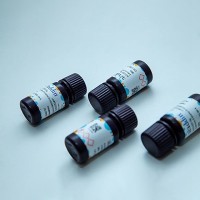Using Quantitative Fluorescence Microscopy and FRET Imaging to Measure Spatiotemporal Signaling Events in Single Living Cells
互联网
互联网
相关产品推荐

Cathepsin D and E FRET Substrate acetate,839730-93-7,≥98%,阿拉丁
¥1149.90

Recombinant-Sclerotinia-sclerotiorum-High-osmolarity-signaling-protein-sho1sho1High osmolarity signaling protein sho1 Alternative name(s): Osmosensor sho1
¥11592

噻唑蓝四唑蓝,298-93-1,Membrane-permeable yellow dye that is reduced by mitochondrial reductases in living cells to form the dark blue product, MTT-formazan.,阿拉丁
¥895.90

赛默飞世尔Thermo Fisher Rainfall measure moulded in high impact styrene readings in mm & inches graduate conical 货号:T_70313142201
¥5

MKN45人低分化胃癌细胞|MKN45细胞(Human Poorly Differentiated Gastric Cancer Cells)
¥1500
相关问答

